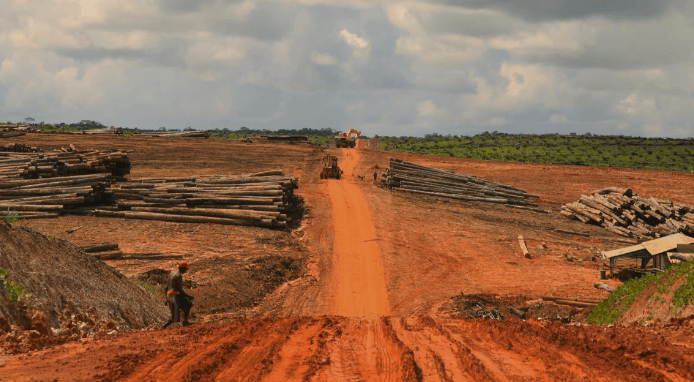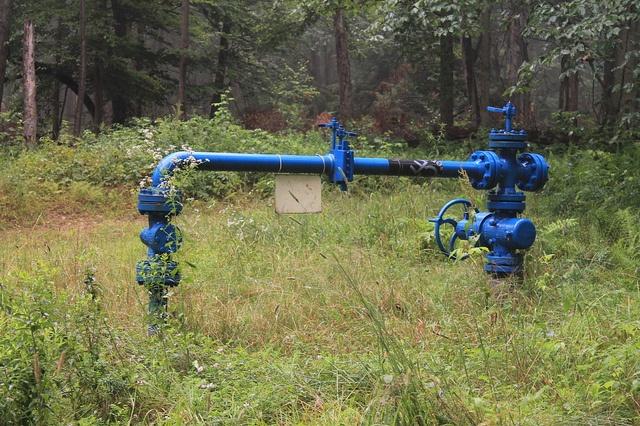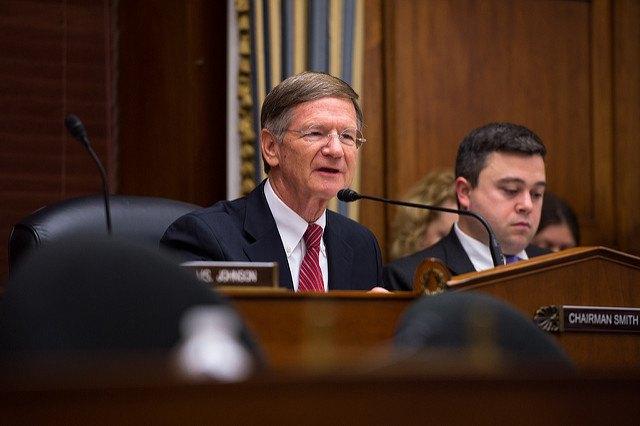Insurers to G-20: Stop Fossil Fuel Subsidies


As the annual G-20 Summit begins this weekend in Hangzhou, China, a coalition of insurers has a message for the leaders of the world’s largest economies: Stop all subsidies for fossil fuels by 2020.
In an open letter sent to G-20 leaders, insurance companies and other financial institutions channeled last year’s COP21 talks in Paris to urge a quicker transition to a clean-energy, low-carbon economy. Managing an estimated $13 trillion in assets, the signatories pushed G20 countries to phase out all use of public funds for the development of oil, gas and coal.
They also put pressure on the G20 to finalize the Paris agreement, double the world’s investment in renewables by 2020 and behoove financial regulators to mandate climate-related disclosures. NGOs joined these companies in signing the letter, including CDP, the Investor Group on Climate Change and Ceres.
Three large multinational insurers -- Aviva and MS Amlin of London and Netherlands-based Aegon -- have been particularly outspoken with pushing this declaration. These companies alone manage $1.2 trillion in assets worldwide.
Aegon says such commitments to confronting climate change risks are necessary for its long-term planning and will motivate the company to increase investments in renewables. The company finances solar projects in the U.S., contributed to the launch of a $50 million wind farm in Germany and this year started a solar energy fund for institutional investors. Earlier this year, Aegon also announced that it would no longer invest in companies that generate more than 30 percent of their revenue from the sales of thermal coal. Although the company said such investments totaled a scant amount of its portfolio, it says executives wanted to minimize any exposure to what more insurers are now generally describing as “stranded assets.”
Aviva is another signatory that is appearing to walk the talk. The company claims to have made over $460 in clean energy investments, reduced its carbon emissions by almost 40 percent since 2010, and cut its employees’ air travel while using rail more to conduct company business. Renewable power also provides over 60 percent of the company’s electricity needs.
While many of the world’s largest economies are increasing their investments in renewables, subsidies for oil, gas and coal development are still the norm. The Organization for Economic Co-operation and Development (OECD) estimates that its member states pay anywhere from $160 billion to $200 billion annually for fossil fuel subsidies. That is exponentially more than what these countries spend on clean-energy research and development, and it's twice as much as the $100 billion the OECD says will meet the world’s climate finance objectives for 2020.
Other global organizations are also lighting a fire under the world’s richest countries so that they take faster action on climate change. The World Bank says climate change risks could condemn another 100 million people worldwide to a life of poverty by 2030. And the International Monetary Fund (IMF) has taken the OECD’s estimates even further, suggesting that when accounting for human health and environmental damage, fossil fuel companies are costing the world’s economy $5.3 trillion a year -- or $10 a minute.
Image credit: Peter Dowley
Nonprofits Sue General Mills Over 'Natural' Label Claims


Three nonprofit organizations think products labeled 'natural' shouldn’t contain toxic ingredients like the herbicide glyphosate, the main ingredient in Roundup. Moms Across America, Beyond Pesticides and the Organic Consumers Association filed a lawsuit against General Mills for misleading consumers by labeling Nature Valley granola bars as “made with 100 percent natural whole grain oats.” Glyphosate residue was recently found in the granola bars.
The groups say General Mills' all-natural claims on Nature Valley granola bars are “false, deceptive and misleading” due to the discovery of the herbicide. General Mills did not immediately respond to TriplePundit's request for comment.
The lawsuit states that glyphosate is “a potent biocide and human endocrine disruptor, with detrimental health effects that are still becoming known.” The groups filed the suit with the Richman Law Group in Washington, D.C. under the District of Columbia’s Consumer Protection Procedures Act.
General Mills is not the first company to face a lawsuit over the use of the word 'natural' on food labels. The Hain Celestial Group faced a lawsuit over the use of the word on its Alba Botanics line of personal care products. The suit contended that the use of the word 'natural' was misleading because the products contain artificial ingredients. A federal judge in California dismissed the lawsuit, but in the spring the Ninth Circuit reversed the dismissal.
Glyphosate is linked to a slew of health problems
In April, the Alliance for Natural Health USA (ANH-USA) released a report that found glyphosate residues are “widely distributed” in breakfast foods. The ANH tested 12 popular breakfast foods and breakfast food ingredients, totaling 24 items tested, including eggs and non-dairy creamers. The report suggests that Americans eat foods containing glyphosate residues on a daily basis.The findings of the ANH report are troublesome because the herbicide is linked to health problems, as studies have found. A study published earlier this year found a possible link between the herbicide and a slew of diseases, including diabetes, obesity, asthma, infertility and lupus. The study found that glyphosate can cause changes to DNA function which can result in the onset of certain chronic diseases. Researchers concluded that “there is an urgent need to find an effective and economical way to grow crops without the use of glyphosate and glufosinate as herbicides.”
The International Agency for Research on Cancer, the cancer agency of the World Health Organization (WHO), classified glyphosate as “probably carcinogenic to humans” last year. Shortly after, California added glyphosate to the list of known carcinogens under the state ballot proposition known as Prop 35.
"Food grown with dangerous pesticides like glyphosate isn't natural,” argues Alexis Baden-Mayer, political director of the Organic Consumers Association, in a statement. “Consumers understand this. That's why sales of natural products are booming. Unfortunately, companies' misleading claims trick consumers into buying just what they're trying to avoid. This has to be stopped."
Natural isn't what it's cracked up to be
The use of the term 'natural' on some food products can be misleading. Consumers assume when they buy a product labeled 'natural,' they are getting products that are truly 100 percent from nature and do not contain synthetic ingredients. That’s not always the case. Foods labeled 'natural' can contain high-fructose corn syrup or artificial ingredients.Most consumers are unaware. A 2015 Consumers Report survey found that more than half (62 percent) of all those surveyed usually look for food products with a natural label. The survey also found that almost two-thirds of consumers believe the 'natural' food label means more than it does. The majority believed it means no toxic pesticides were used (84 percent); they also assumed the item did not contain artificial ingredients (84 percent) or toxic chemicals (85 percent). And 87 percent said they would pay more for foods labeled 'natural' if they met all of their expectations.
The U.S. Food and Drug Administration (FDA) doesn’t define what the use of the term 'natural' means nor does it regulate its use. All it states about the 'natural' label is that it “has not objected to the use of the term if the food does not contain added color, artificial flavors, or synthetic substances.”
Consumer Reports petitioned the FDA in 2014 to ban the use of the term 'natural' on labeling and asked the U.S. Department of Agriculture (USDA) to ban the use of 'natural' on meat and poultry.
The FDA asked the public to comment on how the word natural should be used on foods. The comment period closed in May. One comment submitted to the FDA stated that food products labeled natural “cannot contain herbicides, pesticides or fungicides.”
Indeed, foods labeled as 'natural' shouldn't contain a toxic herbicide like glyphosate.
Image credit: Organic Consumers Association
Deforestation from Palm Oil Production Continues to Spread in Indonesia


As the demand for palm oil surges worldwide, so too have a bevy of environmental problems and human rights violations in Malaysia and Indonesia, the world’s two largest producers of this lucrative crop.
In Indonesia, the industry’s abuses within Sumatra and Kalimantan province on the island of Borneo are well documented. And the environmental nonprofit Mighty Earth says deforestation and the denial of human rights are accelerating on Indonesian Papua in the country’s remote eastern region.
According to a study co-written by Mighty, the consultancy Aidenvironment and the Korea Federation for Environmental Movements, the quest to plant more palm oil plantations is wreaking havoc across what is often described as Southeast Asia’s last frontier. And the culprit, South Korean-owned logging and palm oil giant Korindo, continues to burn down virgin rainforests despite its 2-year-old deforestation pledge.
Meanwhile, the Roundtable on Sustainable Palm Oil (RSPO), the global organization tasked with advancing the production of more responsible palm oil, remains either unable or unwilling to halt the environmental degradation in one of the world’s most pristine and isolated regions.
Activists from Mighty, a partnership between the Center for International Policy and Waxman Strategies, say they have been documenting evidence, including satellite photos of West Papua province, since 2013. They compiled the results of this investigation and shared it with Korindo’s largest customers, including Wilmar, Muslim Mas, ADM and the controversial IOI Group, which saw its RSPO membership suspended earlier this year.
Those companies in turn claim to have suspended their purchases of palm oil from Korindo. But in the meantime, Mighty claims Korindo is responsible for 74,000 acres (30,000 hectares) of deforestation and almost 900 fires throughout Indonesian Papua. And while palm oil is found in about half of the world’s processed foods or consumer packaged goods, Mighty says much of Korindo’s palm oil is being sold to European companies that produce biofuels in order to meet the European Union’s renewable fuel mandates.
The result is a huge threat to Indonesian Papua’s ecosystem, which is home to the country’s largest intact forests and half of its native plant and wildlife species. Endangered animals such as the tree kangaroo and the cassowary, a large, flightless bird, are hence under siege.
Also endangered is the way of life for many of the local people. Aidenvironment and Mighty say Korindo repeatedly violated community rights. Local residents in Indonesia have the agreed-upon right to give or withhold their free, prior and informed consent of indigenous people (FPIC), as recognized by the United Nations and increasingly by international law experts. But Korindo failed to recognize these people’s rights, and one of the company’s subsidiaries now has the notorious reputation of occupying forests and farmland on which families have lived for centuries.
These ongoing problems were exacerbated by Korindo’s investments in logging, which Greenpeace, almost a decade ago, said was behind the destruction of some of the last remaining rainforests in Indonesia. The felling of trees, often illegally, has exacted an even larger environmental and social impact on people who claim they have no say in how the company conducts itself in their communities.
Korindo is yet another company within the global palm oil supply chain that projects an environmentally and socially responsible image, but in reality conducts itself in a starkly different manner. The industry continues to fail in policing itself. This will only amplify the call of environmental groups as they urge consumers, companies and governments to take bolder action before damage to people and the planet becomes irreparable.
Image credit: Mighty/Yerimia Leon
Life After Coal: Spotlight Shifts to Natural Gas Emissions


Last spring the U.S. Energy Information Agency predicted that natural gas would outstrip coal for power generation in 2016, for the first time since the dawn of the electric utility era. That's a significant milepost in the nation's efforts to reduce global warming emissions from fossil fuels. However, it's a mixed blessing for the natural gas industry.
Now that natural gas is in the lead for power generation, it's going to come in for closer scrutiny as a "cleaner" alternative to coal -- and the picture ain't pretty.
More CO2 emissions from natural gas
The Energy Information Agency illustrated the newfound dilemma of the natural gas industry in its latest Short-Term Energy Outlook, issued on August 17.
According to the EIA, first place in the power generation race is not the only prize that natural gas now claims. It also beat out coal for carbon dioxide emissions from power generation:
"Energy-associated carbon dioxide (CO2) emissions from natural gas are expected to surpass those from coal for the first time since 1972. Even though natural gas is less carbon-intensive than coal, increases in natural gas consumption and decreases in coal consumption in the past decade have resulted in natural gas-related CO2 emissions surpassing those from coal."
And the agency isn't talking in fractions of a percentage point, either. EIA puts the emissions figure for natural gas at 10 percent greater than coal for 2016.
The methane emissions problem
The EIA report is focused narrowly on carbon emissions from power plants, and that is an area in which natural gas clearly does a better job than coal. (EIA puts the carbon intensity of coal at 82 percent higher than natural gas.)
However, throughout its lifecycle natural gas also accounts for significant methane emissions, another greenhouse gas.
The lack of an effective regulatory mechanism for managing methane emissions at the wellhead is one key source of the problem, for both natural gas and oil drilling operations.
Last spring, the U.S. Environmental Protection Agency finally took steps to address that issue. The agency issued a new regulatory framework, with this comment:
"Methane, the key constituent of natural gas, is a potent greenhouse gas (GHG) with a global warming potential more than 25 times greater than that of carbon dioxide. Methane is the second most prevalent GHG emitted in the United States from human activities, and nearly one-third of those emissions comes from oil production and the production, transmission and distribution of natural gas."
The EPA also cited new evidence that methane emissions from both oil and gas operations are "substantially higher than was previously understood."
And, the agency noted that methane is not the only air pollutant issuing from oil and gas operations:
"... Emissions of air toxics such as benzene, ethylbenzene, and n-hexane, also come from this industry. Air toxics are pollutants known, or suspected of causing cancer and other serious health effects ..."
Then there's that fracking thing...
Another key problem faced by both natural gas and oil drillers is the mounting pile of evidence about public health and environment impacts from fracking. Short for hydraulic fracturing, this drilling method was formerly considered unconventional. It was mainly practiced in thinly populated areas, where it would be difficult to assemble evidence of systematic impacts.
More recently, fracking has fallen into common use in high-population areas. The disposal of vast quantities of wastewater from fracking operations has also grown apace. All together, that has provided researchers with a much larger data pool.
The result has been one study after the other detailing a range of issues from earthquakes and water pollution to an increase in premature births and asthma risks.
Stay tuned.
Image credits: 1) Flickr/Andy Arthur; 2) U.S. EPA
Carbon Credits Protect Peru’s Historic Forests, Encourage Sustainable Development


Peru has long been a top-10 coffee exporter, producing more beans than its Latin American competitors in Nicaragua, Mexico and Costa Rica. Some of its coffee is even exported to Colombia, where it is repackaged, rebranded and shipped out for export yet again. According to the fair trade co-op Equal Exchange, the coffee industry is a huge job generator in Peru, with approximately 110,000 coffee growers – many of them indigenous people to whom Spanish is a second language.
But with coffee cultivation and production comes environmental risks, including deforestation, soil erosion and the excessive use of agrochemicals.
To that end, the NGO Cool Effect, which manages carbon credit projects across the globe, has embarked upon a conservation effort in northern Peru’s Alto Mayo forest.
The region surrounding Alto Mayo, like much of northern South America, is rich in biodiversity. Hundreds of bird species and thousands of plants, many of which are found nowhere else on the planet, inhabit the Alto Mayo. The officially protected area of the forest, only twice the size of New York City, faces a bevy of challenges.
Despite its official proclamation as a protected area over 50 years ago, more people started to move into the Alto Mayo, clearing forests and killing wildlife. The government launched various initiatives during the 1970s and 1980s in attempts to focus on conservation, but those efforts were often abandoned or forgotten. Meanwhile, deforestation, the increase in population and the building of a major national highway continue to threaten this forest, with the coffee farms in this region contributing to the problem.
But according to Cool Effect, locals and communities are confronting environmental degradation. The local coffee co-ops are in alignment with NGOs working in the region. And together, they have succeeded in achieving organic certification for their product. Reforestation projects are on track to keep water fresh for the approximately 240,000 citizens who live downstream from the Alto Mayo. These efforts, says Cool Effect, prevent 500,000 tons of carbon emissions from entering the earth’s atmosphere.
The work of Conservation International and several nonprofits in Peru inspired Cool Effect to launch a carbon credit program to boost conservation efforts in the Alto Mayo. Consumers can pay as little as $8.79 for one time only or subscribe for the life of the project, to encourage locals to improve and expand their sustainable coffee growing practices. This initiative promises to increase the planting of trees and to create additional economic incentives for the locals who live and work on the land.
But this project is not just about reducing greenhouse gases or environmental remediation: The premiums that wholesalers pay the 600 families growing coffee here work similarly to fair trade projects, boosting incomes while building stronger communities.
It is easy for many of us to lecture the world and its citizens about what they should do in order to protect the planet. But we are not the ones having to live on the land, deal with local authorities and corruption and, finally, worry about how the next meal will be bought or if those school fees for children are going to be paid. Programs such as Cool Effect’s carbon credit projects can encourage sustainable development, mitigate climate change risks in a volatile sector and offer families economic security.
Image credit: Cool Effect
Consumers Spoke, Big Food Listened: How the Food Market is Changing


By Andrea Tolu
Once upon a time, consumers believed that food brands truly cared about their wellbeing. Now, that trust is at an all-time low.
What broke the spell was the uncovering of certain food companies’ practices, such as using addictive ingredients, marketing sugar-loaded food to kids, and sponsoring favorable research studies. The only thing big brands could reasonably do to bring back consumers’ love was to give them what they asked for: healthier food and more transparency.
Here are four examples of such initiatives, which are likely to change the food market to come.
McDonald’s and cage-free eggs
When, at the end of 2015, McDonald’s committed to using cage-free eggs only by 2025, the company was late to the party. Unilever and Burger King, just to name two, had already committed to doing so. However, the fast-food chain's timing was perfect, and after its announcement more and more companies pledged to do the same.
This shift is not without controversy. Cage-free simply means that chickens are out of the cage, not necessarily roaming outdoors. As was pointed out in a New York Times report, this could even be worse for them, and also for plant workers. On the other hand, this move is a step toward the improved treatment of animals and more nutritious eggs.
Mars to customers: Once a week is enough
Last April, Mars, Inc. did something unheard of for a large food company: The food label announced its intention to “help consumers differentiate and choose between ‘everyday’ and ‘occasional’ options.”
In other words, the company will flag (both on packaging and online) those products that should be consumed no more than once per week, due to their high sodium and sugar content. At the same time, other products will be reformulated to make them suitable for more frequent consumption.
Is Mars keeping up with the promise? As it seems, it’s still a work in progress. For example, a Mars bar is described as a “treat that can be enjoyed occasionally as part of a balanced diet and healthy lifestyle.” For a Snickers bar, however, the company used the same phrase, but without the word “occasionally.”
Tesco going public on food waste
From field to store, the food supply chain is a pipeline full of holes and leaks, not to mention what goes to waste in our own homes. According to a 2013 FAO report, 1.3 billion tons of edible food is wasted every year.
Many initiatives are underway around the globe to tackle the issue. Leading supermarket chains, for example, started to donate surplus food to charities. In May 2014, Tesco went a step further and started to publish its food waste data.
In fact, the latest statistics show that Tesco’s food waste went up this year. Transparency is a double-edged sword (which is probably why no other retailer has followed suit so far), but accountability can be a great push to improve.
Panera Bread and clean ingredients
After decades of undisputed popularity, the concept of “diet” is fading. Now consumers think in terms of “healthy” and “clean” eating (however vague these terms may be). Also, they want to know how their food was sourced and processed, the environmental cost of producing it, and whether animals were treated humanely and farmers paid fairly.
Café-bakery chain Panera Bread understood all of this early on, adopting a wider approach instead of laser-focused initiatives. In 2014, the company started to use more free-range meat with less antibiotics, and more recently it announced that it will remove artificial flavors and preservatives from its grocery line.
Why all that is important
There are at least three good reasons why we should care about what large food companies are doing, even if we never buy anything from them.
First of all, how they source their ingredients affects everyone, not only their customers. For example, the massive shift to cage-free eggs is likely to change the egg industry forever: By 2025, caged eggs will be the exception.
Second, when profit-driven corporations decide to implement changes that require a considerable logistic effort (or to publish data that could potentially harm their image), it means that the change in consumers’ expectations reached a point of no return. Companies simply can no longer afford to ignore them.
Finally, initiatives like these prove that when enough consumers move in the same direction, they become a force to be reckoned with.
Image credit: Flickr/darvoiteau
Andrea Tolu is a freelance writer who helps startups and companies in the Food&Tech sector build a solid online presence, to find clients and investors. You can reach out to him via Twitter (@toluand), or subscribe to his newsletter.
The Business Case for Safer Chemicals Now


By Michael Green
Earlier this summer, President Barack Obama signed a major overhaul of our nation’s main law regulating toxic chemicals – the first such change in chemical regulations in 40 years. But many are left wondering if the new law is likely to have significant effects on companies’ use of toxic chemicals.
Consider the case of children’s jewelry. In 2004, a Center for Environmental Health investigation exposed the use of lead-tainted metals in jewelry sold to children. At the time, studies found that upwards of 40 percent of the metal jewelry on the market contained high levels of lead.
Weeks after we released our findings, the government announced the largest toy recall in history, when 150 million pieces of jewelry were removed from gumball machines nationwide.
Within a few years, the entire jewelry industry had changed its practices, virtually eliminating this lead risk to children. Moreover, CEH's work ultimately pushed Congress to adopt the first comprehensive federal law banning lead-tainted materials from all children’s products.
Contrast this swift change to protect children’s health with the new federal chemical regulations. Consider a chemical like bisphenol A (BPA), a substance that can disrupt the bodies’ natural hormones and has been linked to cancer and serious risks to reproductive health, especially for children and pregnant women.
Under the chemical safety bill, you might expect that the EPA would act quickly to regulate such a chemical. But once the EPA decides to subject a chemical to review, it has seven years to conduct that assessment. Even if the EPA determines that safety rules are needed, the law provides no deadlines for compliance, so the agency may give industry years more to bring safer products to market.
But the timeline could get even worse. Industry will surely use litigation to forestall any regulations they deem a threat to their profits. We’ve already seen this happen recently with BPA regulations in California: State scientists there unanimously agreed to add BPA to the California list of chemicals known to cause reproductive health problems, and the industry sued to stop any new restrictions on BPA. A state court eventually threw out the industry lawsuit, but their litigation bought the chemical companies another two years of toxic sales without regulation.
If we add the delays from lawsuits to the already bloated timeline in the federal bill, it’s clear that the new chemical safety bill might protect us from harmful substances like BPA – sometime in the next two decades or more. And this assumes that EPA will actually receive the funding needed to assess the hundreds of harmful chemicals that are currently used in hundreds of products our children and families use everyday.
So, we should pause when those who backed the new chemical regulations applaud the power this bill will have to protect us from the $800 billion a year chemical industry.
But fortunately, outside efforts will continue to move companies away from harmful chemicals. For example, researchers are looking for alternatives to BPA and other chemicals that can disrupt our hormones and cause serious health problems. One group of scientists has developed a cutting-edge screening process that uses a green chemistry framework to help producers avoid creating hormone-altering hazards when they develop new products.
As one of the developers of this testing regime noted, “We want to help chemists make money by grabbing market share in an economy where 'safe' is valuable.”
In fact, major companies are recognizing the business case for safer chemicals already. Walmart and Target are developing policies for safer products, not in response to the new law but as a result of consumer pressure. Similarly, as a result of consumer demand, dozens of leading furniture makers representing billions of dollars in annual sales are now offering furniture made without harmful flame retardant chemicals.
As Richard Liroff, executive director of the Investor Environmental Health Network, told GreenBiz: Companies that fail to address the health and environmental threats from toxic chemicals “pose a greater risk for investors than companies that take such steps.”
Smart companies know that safer products made without toxic chemicals will provide a marketplace advantage and avoid the liabilities associated with chemical health and environmental costs. Companies that continue to sell toxic products while such sales are protected under the treacherously slow progress of the new chemical safety law will soon find themselves outliers in the 21st-century reality of consumer demand for safe, healthy alternatives.
Image credit: Flickr/Kevin McShane
Michael Green is Executive Director of the Center for Environmental Health.
Rock the Green: MillerCoors


This article is part of a series of interviews with companies supporting the Rock the Green sustainability festival. Follow along here.
Welcome to our series of interviews with companies that are supporting the upcoming Rock the Green sustainability festival in Milwaukee on Sept. 17. We’re asking companies to talk about their own sustainability stories, as well as to explain why they’re supporting the event — one of the most sustainable festivals around.
This time we chatted with Kim Marotta who is the Director Sustainability for MillerCoors, a venerable Milwaukee brand and no stranger to big events. We wanted to know what sustainabilty means at MillerCoors and why the company would get involved in a festival dedicated to the subject.
TriplePundit: What's MillerCoors' definition of sustainability, and why is it important to you?
Kim Marotta: At MillerCoors, we define sustainability as making a positive and meaningful impact on the social, environmental and economic issues that affect our business, employees and other stakeholders.
It’s important to us because we know with great beer comes great responsibility. Since 2008, we've been committed to creating America’s best beer company. Such a lofty objective requires the dedication of everyone within the organization, from our leadership and our brewery employees to our farmers and suppliers. Together, we are committed to finding new and innovative ways to build on our heritage of brewing high quality beer more sustainably.
3p: What are the most important sustainability issues your company deals with?
KM: The sustainability issues that are most important to MillerCoors can be broken down into three of our sustainability pillars:
- Great Times: Promote and protect the responsible enjoyment and marketing of beer
- Great Environment: Embed environmental stewardship in the way we operate
- Great People and Communities: Empower our employees, suppliers and communities
3p: Sustainable thinking is no longer just a "nice to have,” it's increasingly seen as a competitive advantage. Tell us how sustainable thinking is helping move you forward?
KM: We've always taken our role as a responsible corporate citizen very seriously. Our commitment to responsibility, to our communities and to our environment is deeply woven into the fabric of our company and it’s never been treated as a nice to do, it’s a must do for MillerCoors.
Our sustainable thinking has proven to help us innovate and build stronger ties within our workforce, suppliers and communities. Coors Brewing Company helped launch the recycling revolution by pioneering the aluminum can, and we have been building on that legacy ever since. We invented the American light lager category, helped transform the American craft beer movement and changed the way Americans drink beer. This commitment to sustainability, quality and innovation is what makes us leaders and it’s how we are creating America’s best beer company.
3p: Rock the Green, the concert, is all about going for zero waste. How has your company reduced waste across your operations? Has it paid off for you financially?
KM: MillerCoors proudly announced earlier this year that all of our major breweries and two major manufacturing facilities are now landfill-free. We currently reuse or recycle nearly 100 percent of our brewery waste. We try to eliminate excess as much as possible and with the waste we generate, we turn them into energy, compost and soil conditioner. We send the remaining byproducts to companies that use them for beneficial reuse.
Not only is diverting our waste from landfills good for the planet, it’s also good for our bottom line. By properly sorting and maintaining the integrity of our waste streams, we are able to send our aluminum, glass cullets, plastic and cardboard packaging to recycling facilities and sell our brewer’s grain and spent yeast to local farmers and pet food companies to be made into feed for animals. By finding new homes to repurpose our waste, we can create greater economic value while reducing our environmental impact.
3p: Surveys show that employees are happier and more productive when they're engaged with a company's sustainability strategies. How do you engage your staff to implement your sustainability plans?
KM: MillerCoors believes all our employees have a role to play in brewing a sustainable future. We empower our people – regardless of position, location or level - to be entrepreneurial and create solutions that can help us reach our sustainability goals.
A number of our initiatives or best practices have come from employees working on our brewery lines. One example is our landfill-free initiative, which was spearheaded by longtime MillerCoors technician Kelly Harris, who works at the Trenton, Ohio, brewery. In 2008, he developed a waste-reduction business plan and gained the support of his plant managers to implement the strategy. By 2010, Kelly led the Trenton brewery to become the company's first landfill-free facility, and the world's first zero-waste mega brewery. By 2013, Kelly helped four other breweries in Eden, N.C.; Irwindale, Calif.; Shenandoah, Va.; and Golden, Colo. achieve landfill-free status.
Our people are the key to all of our sustainability achievements. We believe all our employees have a voice and can provide essential insights that can help us meet our sustainability goals. That is why we invite employees from across the organization to participate in our Sustainability Leadership Council. By leveraging key learnings and the passion of our people to brew beer more sustainably, we can continue to build upon our results and make a positive impact on our environment, our community and our world.
3p: In a nutshell, how will you be "rocking the green" in the coming 5 years?
KM: We have a very ambitious set of environmental goals we are trying to achieve by 2020, including:
- Reducing our water-to-beer ratio across all our direct operations to achieve an average ratio of 3.0:1.0
- Restoring a volume of water equal to the final product volume from our breweries and cidery located in water-stressed watersheds through projects that directly contribute to the sustainability of the local water resource
- Expanding our sustainability programs to manage and reduce agricultural resource risks, including water risks, in 100 percent of our key barley-growing regions (Baseline 2014)
- Reducing our carbon footprint per barrel of beer produced across our value chain by 25 percent
- Achieving landfill-free operations at all major manufacturing facilities
We have made significant strides against our 2020 goals in the past year, and we will continue to bolster our efforts to brew a more sustainable future, sharing our passion with our communities and making a positive impact on the environment along the way.
For more information on MillerCoors sustainability commitment, please visit our website at http://www.millercoors.com/sustainability.
Congressional Climate Science Witch Hunt to Start Hearings


The ongoing climate science witch hunt led by U.S. Rep. Lamar Smith of Texas will morph into a new phase on Sept. 14.
Smith, chairman of the House Committee on Science, Space and Technology, announced a hearing on that date, intended to reaffirm the committee’s authority to issue subpoenas to parties investigating ExxonMobil’s alleged suppression of climate change information. The committee will also discuss recourse for the state attorneys general and NGOs that so far have refused to submit emails and documents requested by subpoena.
Smith’s scheduling of this hearing comes a week after the attorneys general of New York and Massachusetts reaffirmed their refusal to cooperate with the committee’s subpoenas.
Experts expected to testify include three law professors:
- Jonathan Turley of George Washington University, the one "liberal" witness whose legal opinions have been celebrated on Breitbart News and has recently suggested that Donald Trump’s “extreme vetting” policy is legal.
- Elizabeth Price Foley of Florida International University. Earlier this summer, Foley insisted the “climate prosecutors” including Greenpeace and the Union of Concerned Scientists (UCS) must comply with Smith’s subpoena requests.
- Chapman University’s Ronald D. Rotunda, who the National Enquirer interviewed about Hillary Clinton’s connection to Daesh (otherwise known as ISIS, ISIL or IS). Rotunda also suggested to Breitbart News that Clinton could nominate President Obama to the Supreme Court.
As of press time, the Democrats on the Science Committee have yet to name any witnesses.
As David Hasemyer of Inside Climate News reported on Wednesday, Foley and Rotunda both publicly criticized the state attorneys general involved in the ExxonMobil investigation. They also have ties to think tanks financed by the fossil fuel sector.
The NGOs primarily involved in this legal tug-of-war, Greenpeace and UCS, remain unimpressed with what appears to be a meeting of right-leaning minds instead of a fair and balanced hearing. Both organizations responded in kind.
“Science Committee Republicans are planning to hold a hearing to determine if the subpoenas they’ve already served are constitutional,” said Annie Leonard, executive director of Greenpeace USA, in a public statement issued on Tuesday. “Shouldn’t they have determined this before creating yet another distraction from bipartisan progress on climate change?”
UCS also made it clear that its executives will not budge.
“From the outset, Chairman Smith has overstepped his authority with this investigation,” UCS President Ken Kimmell wrote in an emailed statement to TriplePundit. “He has consistently mischaracterized our work in repeated, convoluted attempts to justify his efforts."It is telling that after issuing broad, unilateral subpoenas, he is now holding a hearing to figure out if his actions are legitimate. However, Chairman Smith stacks this hearing with friendly witnesses; it's clear that he's on shaky legal ground.
"We will continue to stand firm against this abuse of power and defend our First Amendment rights. While our offer to brief the House Science Committee still stands, we will not comply with an unconstitutional subpoena, nor will we stop working to expose misinformation on the science of climate change."
UCS claims it is willing to meet with the committee and that the documents under question are already publicly available on the NGO’s website. Greenpeace has been far less conciliatory, and called Smith out for what it calls his regurgitation of ExxonMobil’s talking points on climate change that are now 20 years old. Another NGO mired in this legal battle, 350.org, dismissed the hearing -- describing it simply as more “buffoonery” on the part of Smith.
The attorneys general who in particular have been the target of Smith’s ire, Maura Healey of Massachusetts and New York’s Eric Schneiderman, also pushed back against the congressman, fomenting the criticism of publications such as the Wall Street Journal. Schneiderman described the subpoenas as violating his state’s sovereignty.
The odds are close to nil that this confrontation will end any time soon as both sides refuse to budge, especially during a presidential election year. But the fact that Smith continues to rack up political donations from the fossil fuel industry also reveals an investigation that, at a minimum, is political posturing and at its worst a crusade against climate science fueled by corruption.
Image credit: Flickr/NASA HQ
Shareholder Resolution Asks Walgreens To Review Tobacco Sales


Is it ethical and moral for a retail pharmacy company to sell tobacco products? Not if you ask Walgreens shareholders and members of the Interfaith Center on Corporate Responsibility (ICCR). They recently filed a shareholder resolution requesting that Walgreens' board of directors review the risks of tobacco sales in the company’s pharmacies. The resolution is expected to appear on the ballot at the company’s annual meeting on Jan. 26, 2017.
The resolution asks the board of directors to issue a report within six months of the 2017 annual meeting “assessing the financial risk, including long-term legal and reputational risk” of continuing to sell tobacco products in Walgreens’ stores. The mission statement of Walgreens Boots Alliance, Walgreens' party company, reads: “We help people around the world lead healthier and happier lives.” But as the resolution points out, nearly every public health organization has identified cigarette smoking as the leading contributor to the top four causes of death in the nation: heart disease, cancer, stroke and emphysema.
TriplePundit spoke with Tom McCaney of the Sisters of St. Francis of Philadelphia, the lead investor on the resolution, to understand more about the resolution. He broke it down simply: “We’re asking the company to review the financial, reputational and legal risks of continuing to sell this deadly product, but the motivation behind it is we want them to stop selling it.”
So, why not just file a resolution asking Walgreens to stop selling cigarettes? “Because any shareholder resolution is subject to SEC rules, we can't necessarily ask for what we really want,” McCaney explained. “We're asking [the Walgreens board] to review, and they know our motivation. We've had dialogue with the company, and we've made it clear what our intentions are."
The U.S. is the only country in the industrial world where cigarettes can be sold in pharmacies. In 2014, CVS became the first national retail pharmacy chain to stop selling tobacco products in all of its stores. Several other national chains followed suit, including Wegmans and Target. In 2014, 28 attorneys general sent a letter to Walgreens urging the company to “follow the example set by CVS ... and to cease selling tobacco products in your retail stores throughout the United States.”
CVS conducted a study in 2015 over an 8-month period on the impacts of its decision to stop selling tobacco products. What the study found is a 1 percent reduction in cigarette pack sales across all retailers in states where CVS had a 15 percent or greater share of the retail pharmacy market, compared to states with no CVS stores. The study also found that the average smoker in those states purchased five fewer cigarette packs, and about 95 million fewer packs were sold. Nicotine patch purchases also rose by 4 percent during the 8-month period.
“Our message to the company is that we want them to align their operation with their mission,” McCaney told TriplePundit. Large pharmaceutical companies “have really positioned themselves as partners in healthcare,” he pointed out. While they have “always been a part of it,” they now employ nurses at some locations, have health clinics at some of their stores and do various types of healthcare testing, he continued. They are healthcare companies, and that’s what bothers the shareholders who filed the resolution.
As McCaney declared: “To us, it's egregious not only that they would sell the disease, but they're selling the cure right next to it as well with cessation products.” Or as the letter sent by the attorneys general stated: “There is a contradiction in having these dangerous and devastating tobacco products on the shelves of a retail chain that services health care needs.”
Image credit: Flickr/Mike Mozart